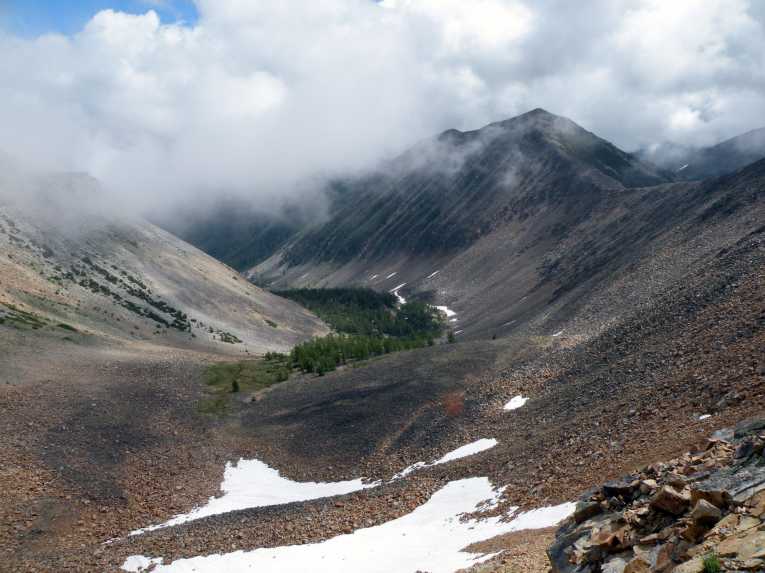[Photo Caption: Trees growing at high elevations below melting snow fields.] [Photo Credit: Greg Pederson, 2009, © Science/AAAS]
For much of the world, snow-pack and ice provide a needed thread of continuity in their water supply. Rivers that drain snow-covered mountains continue to flow strongly throughout the spring and summer - with melt-waters from icy mountain-tops continuously replenishing streams, even when rainfall is low. The Western US is no exception - up to 80% of the river flow of the Missouri, Colorado and Columbia rivers comes from snow-melt.
But that may be about to change. A paper, published online in today's ScienceExpress, confirms that the Rockies' snow-pack reservoir is disappearing - at a rate that is unprecedented over the last 800 years. And the paper's authors, from universities across the western US and Canada, see that spike as being pushed by global warming. With water demand in the western US on the rise, that bodes ill for water security across a heavily populated region.
Many previous studies have noted that the snow-packs, of the North American Rocky mountains, have been on a downward slope over the last few decades. But as with much that goes on in the natural world, variability in snow-pack is the norm, and it's always possible that trends seen today are part of long-lasting natural cycles.
In order to see whether the last five decades of diminishing snow-fields is a break from the norm, the team of climate scientists and dendrochronologists looked to the trees for a solution. The idea is to unlock the story of climate variability, shown in patterns of tree rings, to deduce what has been happening to the snow-pack over the last 800 years. Previous authors have done piecemeal research in parts of the Rockies region - but this team was thinking big.
They wanted to get a complete picture of rainfall, stream flows and temperatures from the entire region. A wide variety of trees were sampled, including those found near the snow-line, whose growth is closely linked to the presence of the snow-pack. In all, 66 tree-ring chronologies were used, and two interesting stories were apparent from the merged results.
Firstly, a repeated pattern, which saw snow-fall swing from the Upper Colorado to the Northern Rockies - in a natural to-and-fro over decades appears to have stopped in the 1980's. That uncoupling may well be linked to a change from snowfall being the main factor influencing snow-pack area, to warmer temperatures dominating, which has led to both areas experiencing melting together.
Secondly, the loss of snow-pack in recent decades has no parallel, over the eight centuries of data that the team looked at. This strongly suggests that the big ugly hand of global warming is making itself known even here, in the snow-tipped mountains of the Rockies. And the implications for water supply in the Western US are likely to be profound and long-lasting.










